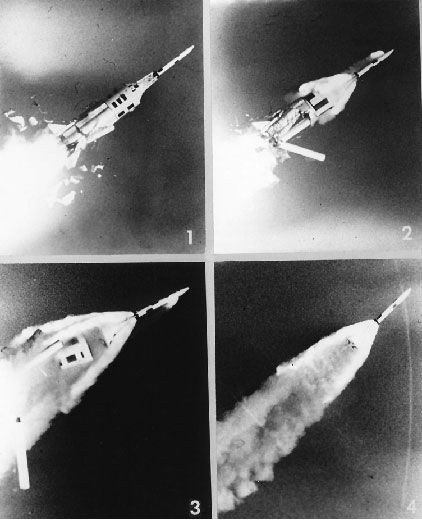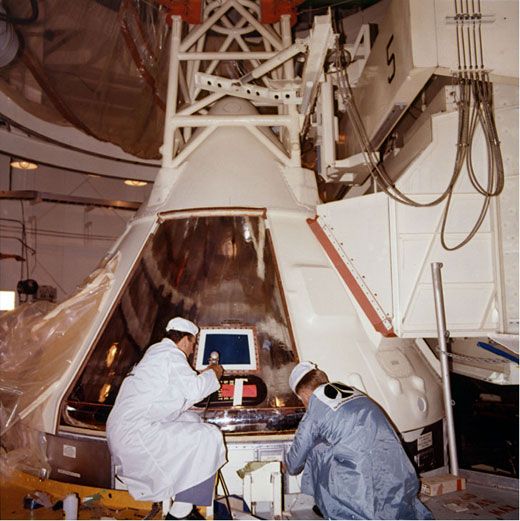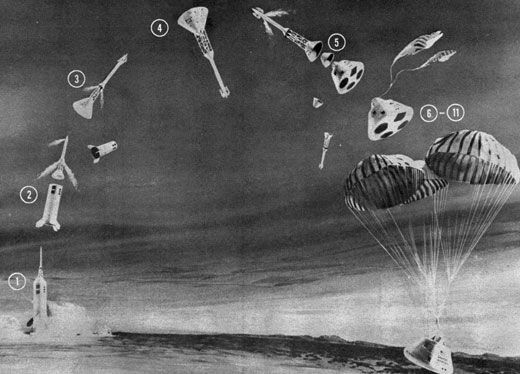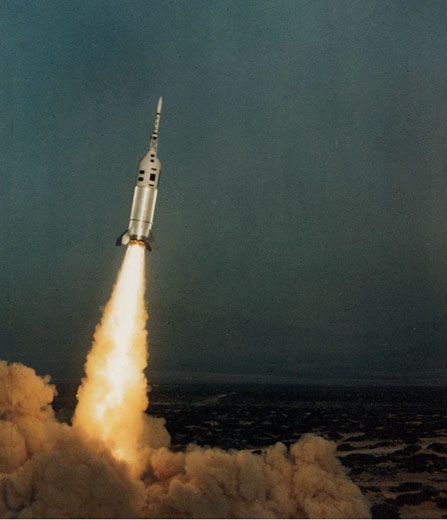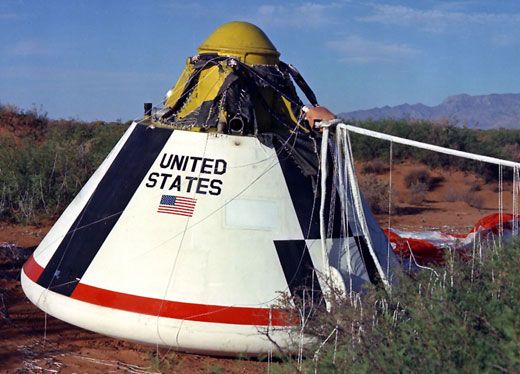Confidence Booster
This little known Apollo artifact caused astronauts to rest a little easier.
/https://tf-cmsv2-smithsonianmag-media.s3.amazonaws.com/filer/bp22-388.jpg)
Sitting on top of a silver rocket outside NASA’s Johnson Space Center in Houston, Texas, is one of the coolest—but least known—Smithsonian artifacts of the Apollo era. I’m sure many people have passed it in their rush to see the giant Saturn V rocket nearby. But unless they’ve stopped to read the exhibit label, few visitors would appreciate the object’s significance. Its official name is Boilerplate-22, “BP-22” for short. It is essentially an engineering model of the Apollo command module—identical in size and weight to the real thing, but lacking the instruments that would have allowed it to fly in space.
BP-22 was built to test the Apollo Launch Escape System (LES), a small, thin rocket perched on top of the Saturn V during launch. If the giant rocket had blown up on the pad, the LES was designed to pull the Command Module quickly away from the destruction so that it could parachute back to earth safely. The LES was the astronauts’ life insurance.
The silver rocket is an unused Little Joe II, used to test the LES at the White Sands Proving Grounds in New Mexico during the early 1960s, when the Apollo hardware was still in development. The Little Joe II shares a heritage with the original Little Joe, a smaller vehicle designed to test a similar escape system used during the Mercury program. An engineer came up with the name when he saw the two matching pairs of nozzles on the back end of the rocket. It looked like someone holding a pair of twos, which poker players sometimes refer to as a “Little Joe.” The Little Joe II was bigger than its predecessor, and included a much more complicated series of clustered rockets. But since it was also designed to test a launch escape system, the name stuck.
The Apollo test program started simple. The first launch of the Little Joe II, on August 28, 1963, carried a plain aluminum shell designed to look like an Apollo capsule with an LES attached. That proved the booster would work. The second launch, on May 13, 1964, carried BP-12 and performed the first successful abort using the new escape system. This was followed by a third launch, using BP-23, that tested the effectiveness of the LES when the pressures and stresses on the spacecraft were similar to what they would be during a real launch.
The fourth flight, with BP-22 on May 19, 1965, was designed to test the escape system at a high altitude. The plan was to fire the LES at about 110,000 feet, right on the edge of space—the highest altitude at which the system could be fired safely. To demonstrate that the astronauts could escape a sudden Saturn V catastrophe, the LES was supposed to fire its rockets and pull BP-22 away from the Little Joe II. Small canards at the top of the LES would keep BP-22’s heatshield pointed down toward Earth during reentry through the atmosphere. When the spacecraft had reached 40,000 feet, the LES would be jettisoned and the parachutes would deploy, allowing the boilerplate Apollo module to float safely back to Earth.
It didn’t turn out that way. The Little Joe II quickly gained altitude after launch, but what happened next was an astronaut’s worst nightmare. Each of the four fins on the Little Joe II consisted of a large elevon used to steer the rocket. Unfortunately one of these became stuck, causing the rocket to spin rapidly. The resulting force starting tearing the rocket apart at an altitude of only 12,000 feet. For a moment it looked as though BP-22 would be lost. But the new escape system did just what it was supposed to: It detected the breakup of the Little Joe, fired its rocket, and pulled the module away from the doomed rocket. A few minutes later the parachutes deployed, and BP-22 landed safely. In fact, the mockup was in good enough shape to be reused for a later abort test on the launch pad.
Many historians cite the success of Apollo 4—the first launch of the Saturn V, in November 1967—as the milestone that got NASA back on track to reaching the moon after the devastating Apollo 1 fire of January 1967. That’s certainly true. But it was the serendipitous flight of BP-22 two years earlier that had given engineers confidence that their new launch escape system could handle an actual disaster. BP-22 earned its place of honor in Houston.
National Air and Space Museum’s Center for Earth and Planetary Studies.
